Living off-grid on a homestead is one big step towards being prepared for emergencies. Since many off-gridders are self-sufficient, power outages don’t necessarily affect us like they do everyone else. We also usually have enough essentials to last us a few weeks before we need supplies.
This also gives us a false sense of security that we can stay at home and never have to leave because we live in rural areas. Things can go on in the world around us that won’t affect us. Unfortunately, this is not true.
Natural disasters and man-made events can force us to leave our homestead, often at a moment’s notice. Keeping a bug out bag ready to go is a must-have for any homesteader. Don’t fall for the false sense of security that self-sufficiency brings.
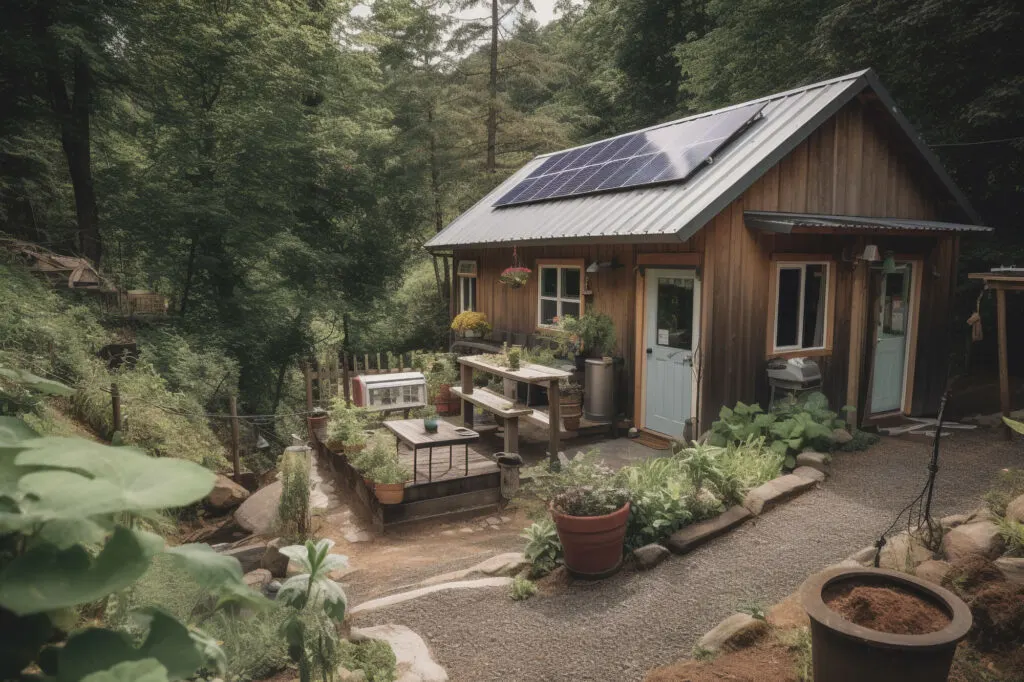
What should someone who is living off-grid put in their go bag? While everyone’s survival kit should be built based on their environment, family, and personal situation, some essential items should always be included.
Let’s find out what those are.
First Aid and Hygiene
First aid is the first thing you should consider when building your bag. Stopping excessive bleeding and being able to breathe are critical to life and can lead to death in a few minutes if not taken care of. First aid items should be your top priority for your family during any evacuation of your homestead.
During a forced evacuation, many people will panic. This will cause them to be careless, and accidents are more likely. A proper first aid kit with trauma items such as a tourniquet and supplies to treat open wounds should be the first item in your bug out bag. Be sure to include bandages, medical tape, a wrap for sprains, and medicine like ibuprofen.
Most people that live off grid know basic first aid. If you don’t, sign up for the next class that you can find. Make sure it includes trauma training for severe bleeding, broken bones, and CPR.
If you take any prescription medications that are critical to your health each day, keep a 30-day supply in your bag. Rotate it out every month. Simply take the current bottle out of your bag and replace it with a new bottle. This way you don’t end up with a bottle of medicine in a few years that may not be effective anymore.
One item that is also critical is N95 face masks or respirators. This is not for protection from viruses but rather for being able to breathe near wildfires or chemical spills/events. Smoke is a killer and can quickly overcome you if you are hiking or driving to safety.
Personal hygiene is also important for long-term well-being outside of your normal environment. You can keep things like toilet paper in your emergency kit for your vehicle. For your bag, hand sanitizer and wet wipes are a great addition for cleanliness. When the wipes dry up, they can also be used as a fire starter.
All-Purpose 298 Piece First Aid Emergency Kit
The First Aid Only 298 Piece All-Purpose First Aid Kit will have you prepared for any potential emergency at home, in the office or on the go. The essential first aid supplies are ideal to treat pain and swelling, as well as cuts, scrapes, and burns.
We earn a commission if you make a purchase, at no additional cost to you.
Water and Food
Water is critical and we can only survive a few days without it. Finding water is usually not an issue except in arid climates. Finding clean water to drink is an issue almost everywhere. Homesteaders know very well how precious water is and how hard a supply is to maintain.
During an evacuation, have water near your bag that you can grab and take. If you are evacuating in your car, you can certainly carry more than if you are hiking. Water is heavy, so trying to carry a few gallons with you when you are hiking is not practical.
I recommend having both a large 5-gallon container for long-term storage near your bag for a vehicle evacuation and smaller 30-to-40-ounce containers for each person in your family ready to go. These personal water bottles should be made from stainless steel and not insulated (single-walled). If you are hiking out, leave the large container, but if you are driving, take as much water as you can haul.
After you consume your initial supply of water, finding and purifying water should become your next priority. The non-insulated metal water bottles will allow you to boil water in them over a fire. You can also cook small items in them if needed.
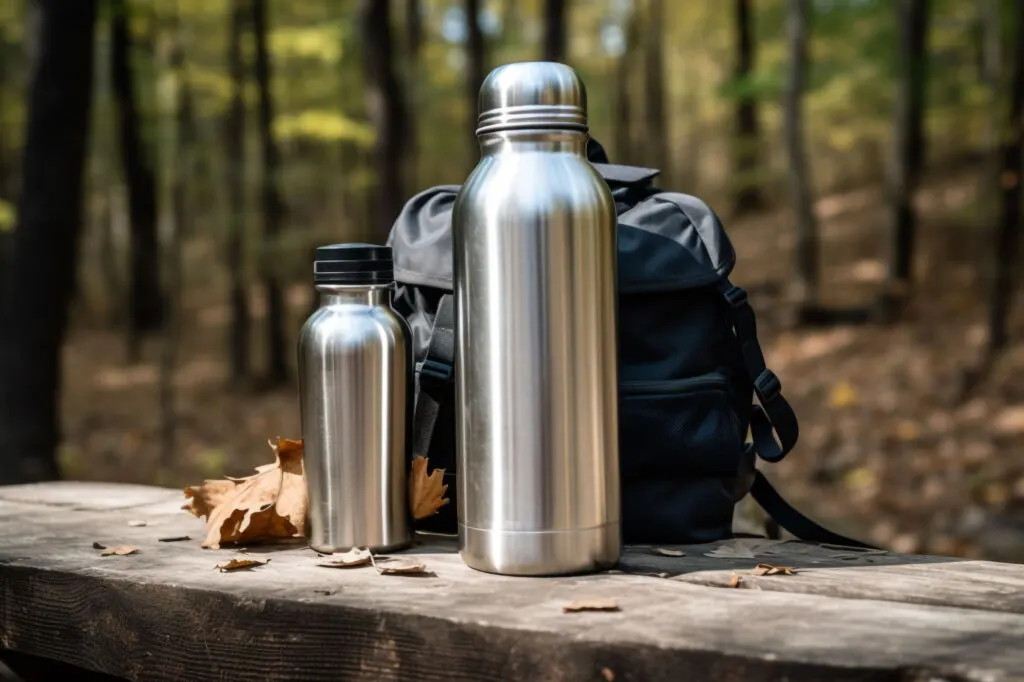
In addition to boiling water to purify it, you should also have water purification tablets and a small survival water filter for each person. The small filters are very effective and much quicker than boiling water. This will allow you to obtain water and keep moving instead of having to stop and make a fire each time you need to purify more water.
Since the human body can typically survive for a few weeks without food, it is not as big of a priority as water. However, it is a huge mental issue if you are traveling, hungry, and do not have food.
I recommend keeping small food items, like a few energy bars or trail mix, in your bag just to keep your appetite in check. I find that if I know I have something to eat if I want, I can focus on other tasks. If I have nothing to eat, the hunger will keep creeping into my mind, making me lose focus.
Shelter Provisions
After personal health and water, we need to maintain our body temperature in an emergency situation. Shelter needs can vary based on the time of year, weather, and your evacuation situation.
If you are bugging out in your car, then you can easily shelter in your vehicle. If you are evacuating on foot, it is a different story. However, even if you do have a vehicle, you may not have it forever, so keeping shelter provisions in your bag is still important.
A lightweight, waterproof tarp is a great tool to have in your bag. I am not talking about the huge 25 ft tarps that might pop into your mind. Those are more for utility purposes around the homestead. I am referring to a survival or bushcraft tarp around 10’ x 10’ that folds up nicely in your bag.
A tarp can be used to make a shelter, collect rainwater, make a stretcher, and many other uses. You could even just put it over your head as you walk to keep the sun off of you or to keep you dry.
Now that you have something to sleep under, you need something to sleep in or on. While a sleeping bag might first come to mind, a waterproof survival blanket is a great option for this. Instead of the popular thin mylar emergency blankets, go for a thicker one with a reflective surface on one side.
A survival blanket will insulate you from the ground and can also be hung behind you to reflect heat from a fire. You can also use the reflective surface to signal for help if needed.
In very cold weather you will need additional clothes and/or blankets. Keep at least a change of underwear, pants, and socks in your bag for each person. Wool blankets are also a good choice since they are naturally water-resistant and fire retardant, and they insulate even when wet. These can be rolled up inside a tarp with extra clothes or attached to the bottom of your bag.
Paracord or another type of cordage should also be considered for your bag. Paracord can be used to help make a shelter, a splint for a broken limb, or to help carry items. Large, heavy-duty trash bags are also handy to have on hand.
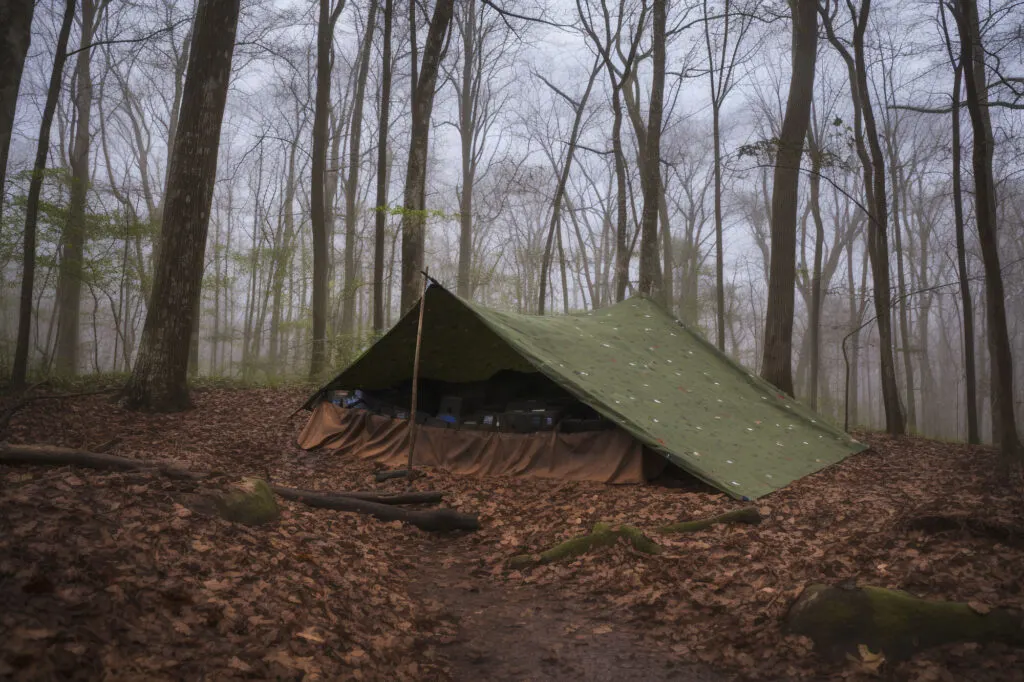
Fire Provisions
Fire makes the previous two items we discussed much easier. Boiling water is nearly impossible without fire, and a warm fire can make all the difference in surviving a cold winter night.
There are many different ways to start a fire, but waterproof matches, a ferro rod, and a survival lighter are all items that should be in your bag. I recommend against counting on a cheap cigarette lighter. They can leak when stored in a bag and are not very durable.
A ferro rod is a compact and reliable fire starter that can be essential in a survival bag, providing a quick and easy way to start a fire in any weather condition.
Always consider how you will get your next fire when in a survival situation. Never use your most precious resource first. In this case, the ferro rod is the best option before using up your matches or lighter. If for some reason you can’t light a fire with the ferro rod, you will know before you really need it.
Most people can start a fire in dry weather fairly easily. In wet weather, it is an entirely different story. Keeping some sort of dry tinder in your bag is essential and doesn’t take up much room. This could be things like an old bird nest, cotton balls soaked in Vaseline, or bushcraft fire plugs you can buy.
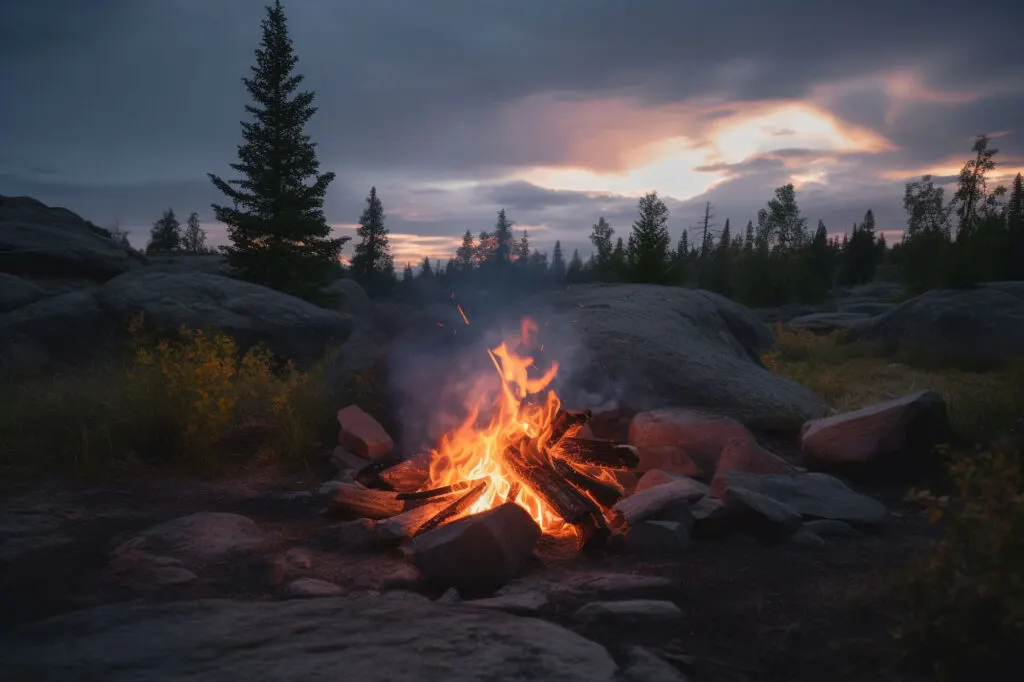
Keep dry tinder in mind for your future fire as you progress through whatever situation you are facing. Weather conditions can change quickly, so don’t assume that since your first fire was easy to start that the next one will be also.
Cash
During an evacuation or bug out event, you can’t take everything with you. Cash will allow you to purchase items you need from others as you travel. Smaller, localized events such as wildfires near your homestead will likely not result in your credit cards not working. However, if you forget your wallet in the rush to leave, some cash in your bag will be nice to have once you make it to safety.
If you are traveling in your vehicle during a widespread event, you will of course need gas. I recommend that if your gas tank is below ¾ full at the end of the day to fill it up on the way home. You never know when you will need to bug out, and if everyone is going at the same time, getting gas somewhere will be an issue.
Eventually, you will need more gas. Having cash on hand will ensure that if credit cards are not working you have a way to purchase it.
Food will also be needed soon after bugging out and could become scarce depending on how widespread the event is. Having cash on hand will allow you to pick up additional food as you travel.
The amount of cash you keep is a personal choice. Certainly, more than $20 is needed but $1000 is probably excessive.
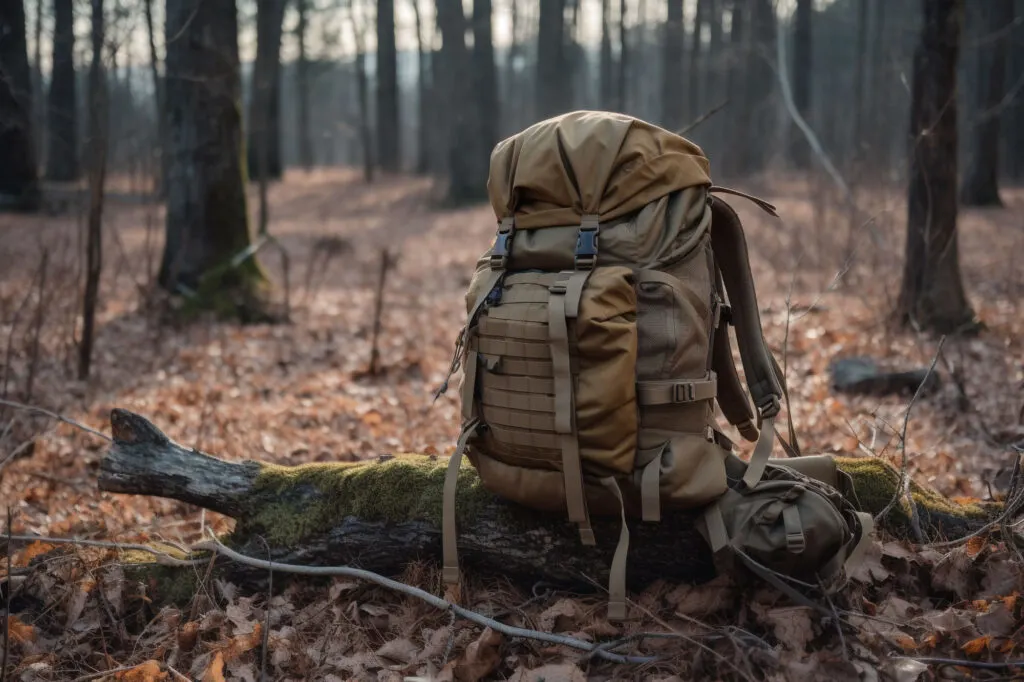
Tools
Anyone that lives off-grid is certainly familiar with the tools needed to keep everything running. I personally keep a knife and good multi-tool with me all the time, plus another set in my truck. But, in the event you need to leave quickly, it is a good idea to keep a knife and multitool in your bag also.
I also recommend a larger fixed-blade knife for your bag that is around 4” to 6” in length. Keep it in a sheath that you can add to your belt (or tie around your waist or bag with paracord).
A folding saw is also a great tool for a bug out bag. They do not weigh much and are invaluable when you need to do anything involving wood. If you are forced to leave on foot, a saw is essential for breaking down firewood and building a shelter.
Depending on your location, other tools such as a machete or survival shovel may be a good idea. In the summer, a machete can make moving through overgrown areas much easier. In the winter, a shovel can help clear snow to build a fire or to help get a stuck vehicle going again.
Navigation
When you are forced to evacuate your homestead, it is usually because you are avoiding a dangerous situation that is coming. Since you will be traveling, you need to know where you are going. Most people rely on their cell phone these days. While they are great for short-term use, the battery life on a phone is usually less than one day.
I recommend keeping a paper map in your bag of your general area. It should also include any area you can drive to in 2-3 hours. As we continue to use our phones for navigation, it seems like our sense of direction and our “mental map” are degrading. If you are 100% off grid and don’t have a phone, this is not the case, but you still need a map.
In addition to the map, a compass is needed to keep you pointed in the right direction. There is nothing worse than trying to navigate over hills and valleys in the woods only to realize you went in a circle.
A portable GPS device is also a great option since you can add waypoints such as meeting locations or other points of interest. Since they are battery-powered, store them in your bag with the batteries removed, and keep two sets of batteries with them.
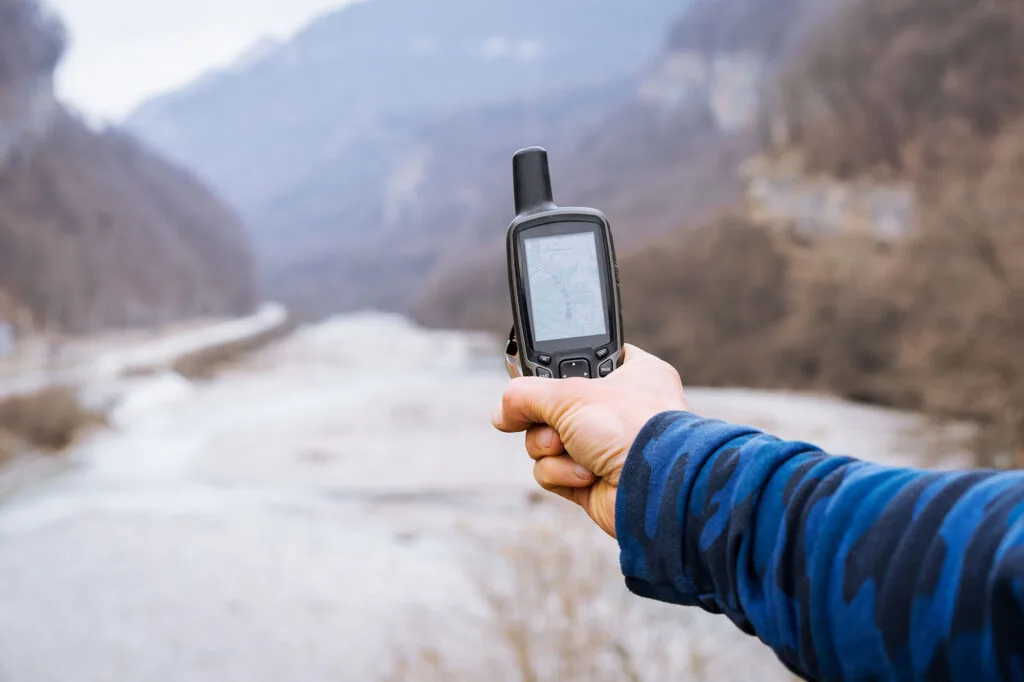
While you are bugging out, there could be locations that you want to avoid. These could be contaminated areas or urban environments with civil unrest, for example. A map will allow you to navigate around these danger zones, especially in areas you are not familiar with.
How to Pack for a Family
When you pack a bug out bag, consider your entire family. I recommend packing a bag for each member in case you get separated. Each should have personal items in addition to the most important items. Include an IFAK (Individual First Aid Kit), water bottle, water filter, additional clothes, survival blanket, important documents, and a couple of large trash bags.
Don’t designate each person to carry a specific item, like Mom carries all the water. That said, children don’t need a large knife and a saw in their bag either. For larger tools and heavier items, split them up. Mom should carry the saw and dad the knife, for example.
Everyone’s bag should have what is critical for their survival. The adults should have tools, shelter, and fire provisions in their bags. Do what makes sense based on the age of your children and what they need if you are separated.
Build your Bug out Bag
When disaster strikes, it usually doesn’t give you much warning. Living off-grid you may get even less warning. When the time comes, you won’t have time to think of and pack all the essential supplies. When it is time to leave, it is not the time to start looking for this article again. You don’t have to worry about building a perfect bug out bag. Just get prepared and use this guide to start building emergency kits that are the best for your family situation.
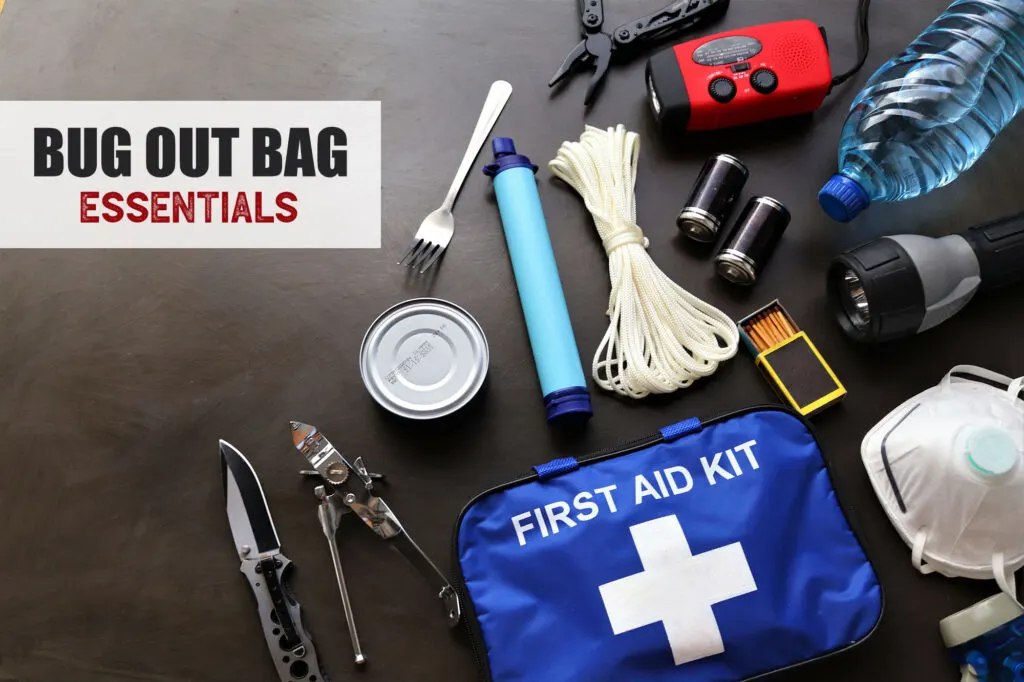
Author – Jason Hitchcock
Jason is a survivalist, outdoorsman, engineer, and the founder of Survivalstoic.com. His team helps people prepare for emergencies and become self-sustaining. When he is not out in the woods he enjoys playing with his young grandchildren and traveling with his wife.

